2023, 60 (4), 687–706
The authors posit that in an initial exposure to a broadcast video, hearing different voices narrate (in succession) a persuasive message encourages consumers’ attention and processing of the message, thereby facilitating persuasion; this is referred to as the voice numerosity effect. Across four studies (plus validation and replication studies)—including two large-scale, real-world data sets (with more than 11,000 crowdfunding videos and over 3.6 million customer transactions, and more than 1,600 video ads) and two controlled experiments (with over 1,800 participants)—the results provide support for the hypothesized effect. The effect (1) has consequential, economic implications in a real-world marketplace, (2) is more pronounced when the message is easier to comprehend, (3) is more pronounced when consumers have the capacity to process the ad message, and (4) is mediated by the favorability of consumers’ cognitive responses. The authors demonstrate the use of machine learning, text mining, and natural language processing to process and analyze unstructured (multimedia) data. Theoretical and marketing implications are discussed.

Motivation to compete: Understanding and overcoming the demotivating effect of competing with more people
HAIYANG YANG AND AMITAVA CHATTOPADHYAY2023, 33(2), 328-345
Competitions are widely used by businesses and nonprofit organizations to enhance customer engagement and foster interactions among consumers. But how can consumers be effectively motivated to participate in competitions that are large (vs. small) in size? Five studies involving a variety of competitive contexts show that, holding the objective likelihood of winning and competition prize constant, consumers tend to perceive a lower likelihood of winning and a smaller prize magnitude when the competition is larger in size. These differences in perceived likelihood of winning and perceived magnitude of competition prize can jointly impact consumers’ participation in competitive situations (Studies 1a, 1b, and 2). Moreover, presenting information that enhances perceptions of winning likelihoods (Study 3) or prize magnitudes (Study 4) can remedy the negative impact of a larger competition size on participation levels. The studies also show that the underlying roles of perceived likelihood of winning and perceived prize magnitude are distinct from the role of social comparison. Overall, these findings add to consumer psychology theories and offer actionable managerial insights.

How Xiaomi Became an Internet of Things Powerhouse
HAIYANG YANG, JINGJING MA, AND AMITAVA CHATTOPADHYAYApril 26, 2021,
When Xiaomi entered the fiercely competitive smartphone market in 2010, it did so without even offering a real phone. The company only offered a free Android-based operating system (OS). Yet, within seven years, Xiaomi became one of the world’s largest smartphone makers, reaching $15 billion in revenue. Accelerating its growth rate, Xiaomi transformed into the world’s largest consumer IoT (Internet of Things) firm by 2020, with its revenue surpassing $37 billion and more than 210 million IoT devices (excluding smartphones and laptops) sold across more than 90 countries.
How was Xiaomi able to grow so explosively and what lessons can other companies learn from Xiaomi’s rise?
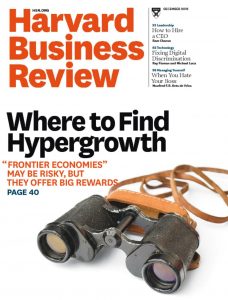
How to Market a Product’s Unexpected Benefit
MONICA WADHWA, AMITAVA CHATTOPADHYAY, JEEHYE CHRISTINE KIM, AND WENBO WANGJune 13, 2019,
Companies often discover that their product delivers unintended benefits. For example, popular beauty brand StriVectin found during product testing that their stretch-mark cream could also reduce wrinkles. Some of the prospective consumers who were handed the topical cream samples ended up using it as a facial moisturizer, claiming that it made them look ten years younger. A recent study found that Viagra unexpectedly reduced the risk of heart attack for patients with Type-2 diabetes. Botox, which was approved for cosmetic use in 2002, was unexpectedly found to alleviate migraines. Some companies find out about unintended benefits from customers’ reviews on sites like Amazon; for example users discussing Omega-3 pills purchased for cardiovascular health were found to be effective in softening skin, and a weight loss supplement was found to improve sleep. How should marketers tout these features?
Research has largely shown that consumers value a benefit more when they believe that a company intended it, compared with when they believe it was unexpectedly discovered. This is because consumers associate intentionality with higher effort, which they value more. This would indicate that marketers should describe unexpected features without calling them out as such.
Based on research in neuroscience, however, we hypothesized that unexpected benefits can also intrigue consumers, making them think that other surprises might be in store for them.
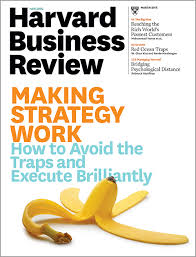
Why Busy is Less Indulging: Impact of Busy Mindset on Self-Control Behaviors
JEEHYE CHRISTINE KIM, MONICA WADHWA, AMITAVA CHATTOPADHYAYForthcoming,
An increasing number of consumers, in recent times, have reported feeling busier than ever. The current research examines how the subjective perception of busyness—which is referred to as a busy mindset in the current research —impacts consumers’ decision-making. Building on different streams of research in sociology and self-view, the current research proposes that a busy mindset bolsters people’s sense of self-importance, which, in turn, can increase self-control. Thus, a busy mindset is predicted to facilitate people’s ability to exert self-control. Seven studies, including a field study, provide support for this busy mindset hypothesis across various self-control domains. Findings from these studies provide support for the underlying process related to self-importance in multiple ways, while also addressing alternative accounts related to stress and the desire for productivity. Finally, findings from the current research delineate important managerially relevant boundary conditions for the proposed busy mindset effect.
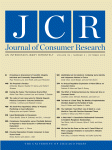
Why You Should Stop Setting Easy Goals
AMITAVA CHATTOPADHYAY, ANTONIOS STAMATOGIANNAKIS, AND DIPANKAR CHAKRAVARTINovember 27, 2018,
When setting team goals, many managers feel that they must maintain a tricky balance between setting targets high enough to achieve impressive results and setting them low enough to keep the troops happy. But the assumption that employees are more likely to welcome lower goals doesn’t stand up to scrutiny. In fact, our research indicates that in some situations people perceive higher goals as easier to attain than lower ones — and even when that’s not the case, they still can find those more challenging goals more appealing.

Feel Busy All the Time? There’s an Upside to That
AMITAVA CHATTOPADHYAY, MONICA WADHWA, AND JEEHYE CHRISTINE KIMJune 6, 2018,
Imagine yourself at a restaurant, trying to decide between two desserts: a chocolate cake and a fruit bowl. You’ve been trying to eat healthier, but the cake just sounds so tasty… What do you do?
As it turns out, your decision is likely to be influenced by how busy you perceive yourself to be.
Busyness has previously been studied through the lens of time pressure. Researchers found that when people feel that they’re under significant time pressure, they tend to make decisions based on emotions. For instance, when consumers are placed in situations where they lack time to complete a task, they grow anxious and become more likely to give in to their impulses. They are more likely to choose the cake, so to speak.
However, that’s not the end of the story, as there’s a flip side to busyness. In recent years, being busy has become an unmistakable badge of honor in many Western societies. It’s quite common for people to humblebrag that they don’t have a minute to themselves. Feeling busy — that is, perceiving oneself to be a busy person — thus makes individuals feel that they’re prized, important members of society.

Attainment versus maintenance goals: Perceived difficulty and impact on goal choice
ANTONIOS STAMATOGIANNAKIS, AMITAVA CHATTOPADHYAY, DIPANKAR CHAKRAVARTI2018, 149 (November), 17-34
We argue that individuals monitor and evaluate attainment and maintenance goals differently. Attainment goals feature a salient current-end state discrepancy that is processed more than the corresponding match for maintenance goals. For maintenance goals, for which a salient discrepancy is absent, contextual influences on goal success/failure receive more processing than for attainment goals. Thus, objectively more difficult attainment goals may be judged as easier than maintenance goals, when they feature sufficiently small discrepancies, or when context information is unfavorable. Study 1 establishes this core effect. Study 2 shows that thought listings capturing the relative processing of the current-end state discrepancy (match) and context information mediate perceived goal difficulty. Study 3 shows that the favorability of context information moderates the effect. Study 4 establishes joint difficulty evaluations as a boundary condition. Studies 5 and 6 (and Appendix B) show that such goal difficulty judgments affect consequential goal choices in real-world financial, workplace, and shopping situations.
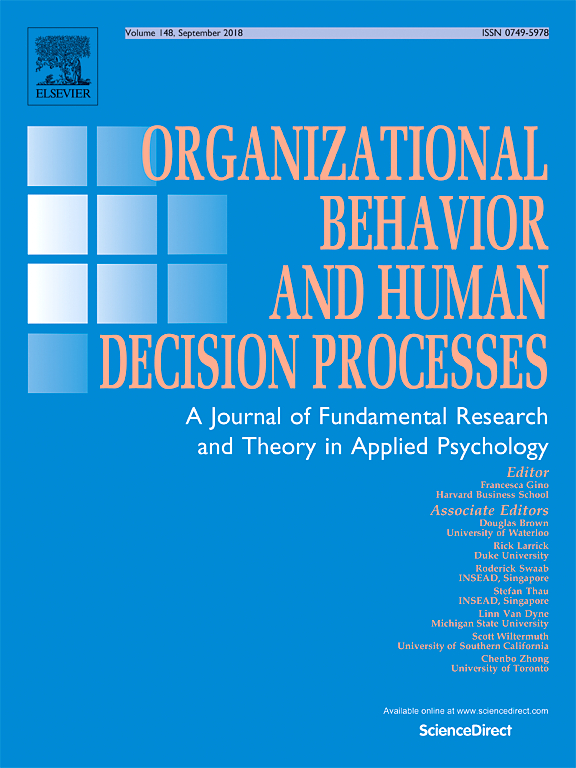
Does Your Company Have the Right Logo? How and Why Circular- and Angular-Logo Shapes Influence Brand Attribute Judgments
YUWEI JIANG, GERALD J. GORN, MARIA GALLI, AMITAVA CHATTOPADHYAYFebruary 2016, 42 (5), 709-726
Five experiments document that the mere circularity and angularity of a brand logo is powerful enough to affect perceptions of the attributes of a product or company. It is theorized and shown that circular vs. angular logo shapes activate softness and hardness associations, respectively, and these concepts subsequently influence product/company attribute judgments through a resource-demanding imagery generation process that utilizes the visuospatial sketchpad component of working memory. There are no logo shape effects on attribute judgments a) when the visuospatial sketchpad component of working memory is constrained by irrelevant visual imagery, b) when people have a lower disposition to generate imagery when processing product information, and c) when the headline of the ad highlights a product attribute that differs from the inference drawn from the logo shape. Further, there are shape effects even when the shape is incidentally exposed beforehand using a priming technique rather than being a part of the logo itself, demonstrating the generalizability of our findings. When taken together, the results have implications for working memory, consumer imagery, and visual marketing.

Pursuing Attainment versus Maintenance Goals: The Interplay of Self-Construal and Goal Type on Consumer Motivation
HAIYANG YANG, ANTONIOS STAMATOGIANNAKIS, AMITAVA CHATTOPADHYAYJune 2015, Volume 42, Issue 1, 93-108
This research examines how self-construal (i.e., independent vs. interdependent) and goal type (i.e., attaining a new state vs. maintaining the current state) are conceptually linked and jointly impact consumer behavior. The results of five experiments and one field study involving different operationalizations of self-construal and goal pursuit activities, suggest that attainment (maintenance) goals can be more motivating for participants with a more independent (interdependent) self-construal, and that differences in salient knowledge about pursuing these goals are one potential mechanism underlying this effect. This interaction effect was found within a single culture, between cultures, when self-construal was experimentally manipulated or measured, and when potential confounding factors like regulatory focus were controlled for. Importantly, the effect was shown to impact consumers’ goal pursuit behaviors—losing vs. maintaining weight—in the field. These findings add to theory and offer insights, to both consumers and managers, on how the goal types can be leveraged.

Six Lessons for Setting Your Business on a Growth Trajectory
AMITAVA CHATTOPADHYAYJanuary - February 2015, 59-62
The refrain I often here among practitioners is that they are facing declining growth, ever increasing competition, and loss of pricing power and thus margin. Is this inevitable in the world of business today, or is there a way that businesses can recharge growth and regain margins? Below are three case studies of companies that have successfully recharged profitable growth and there is a remarkable commonality in their paths to success. We first report the case studies and then draw out the lessons for recharging profitable growth in your business.
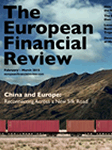
Cracking the Emerging Markets: Lessons from the Indian Experience
AMITAVA CHATTOPADHYAYJan - Mar 2015, Page 38
Multinational companies seeking to tap the vast potential of emerging markets often find themselves stumbling through a fog on unsure feet, discovering that their usual way of doing business will not necessarily bring them either the desired growth or success. In this article, Professor Amitava Chattopadhyay offers some important insights to MNCs operating in emerging markets, based on the experiences of companies in India, who cracked the code and broke the mold.

The Offer Framing Effect: Choosing Single versus Bundled Offerings Affects Variety Seeking
MAURICIO MITTELMAN, EDUARDO B. ANDRADE, AMITAVA CHATTOPADHYAY, C. MIGUEL BRENDL2014, 41(December), 953-964.
Choices of multiple items can be framed as a selection of single offerings (e.g., a choice of two individual candy bars) or of bundled offerings (e.g., a choice of a bundle of two candy bars). Four experiments provide strong evidence that consumers seek more variety when choosing from single than from bundled offerings. The offer framing effect shows that the mechanics of choosing—the ways consumers
go about making choices of multiple items—affect variety seeking in a systematic manner. The data also suggest that the effect is largely due to the single offering frame. Theoretical and managerial implications are discussed.
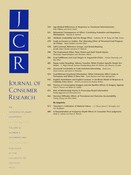
You Are Most Vulnerable When You Are Not Mindful: The Impact of the Mode of Exposure and Interpretive Frame on Self-Evaluations and Brand
FANG WAN, TAMARA L. ANSONS, AMITAVA CHATTOPADHYAY, JASON P. LEBOEDJan 2013, Issue 120, 37–46
Across three studies, we examined the impact of exposure to idealized female images, blatantly versus subtly, on females’ self-evaluations after exposure, as well as attitude towards brands endorsed by models with these idealized body images, in marketing communications. We theorized and showed that blatant exposure can elicit defensive coping, leading to a more positive self-evaluation and a lower brand attitude toward a brand endorsed by a model with an idealized body image. When exposure is subtle, however, idealized body images lead to lowered self-evaluations and increased evaluations of endorsed brands.
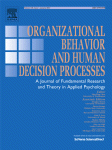
Unconscious Creativity: When Can Unconscious Thought Outperform Conscious Thought?
HAIYANG YANG, AMITAVA CHATTOPADHYAYA, KUANGJIE ZHANG, DARREN W.DAHLOct 2012, Volume 22, Issue 4, Pages 573–581
Recent research suggests that unconscious thought is superior to conscious thought in many cognitive domains. In this article, we show that the duration of unconscious thought has an inverted-U shaped relationship with creativity performance. Unconscious thought is, thus, unlikely to provide creative advantage over conscious thought when deliberation duration is either short or long. However, when deliberation duration is of a moderate length, the creative output of unconscious thought surpasses that of conscious thought. Furthermore, the superiority of unconscious thought pertains only to the novelty dimension of creativity, but not the appropriateness dimension. These findings not only shed light on the powers and limits of unconscious thought but also illuminate the importance of calibration in utilizing unconscious thought to boost creativity.
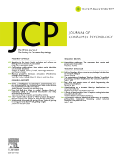
The Interaction of Creativity Training and Extrinsic Rewards on New Product Development
JAMES E. BURROUGHS, DARREN W. DAHL, C. PAGE MOREAU, AMITAVA CHATTOPADHYAY, GERALD J. GORNJul 2011, Issue 75, Issue 4, Pages 53-67
In an effort to improve creativity in the new product development process, many firms offer incentive programs, creativity training programs, or both. However, creativity continues to be a construct that is not well understood in marketing, and little research has examined the joint influence of such initiatives on creative outcomes. As a result, there is considerable variance in the way firms approach these issues. A qualitative study of 20 firms indicates that 15 offered some type of incentive program, whereas only 7 engaged in creativity training (a subset of the firms used both). Given that previous research has consistently found that extrinsic rewards offered in isolation actually undermine the creative process (by reducing intrinsic motivation), it seems that many firms may be unwittingly hampering their own creative efforts. However, two experiments demonstrate that the effect of rewards can be made positive if offered in conjunction with appropriate training. Specifically, product creativity was highest when the monetary reward was paired with a dedicated creative training technique. The training alters the influence of the reward such that it reinforces, rather than undermines, intrinsic motivation. Managers can improve the effectiveness of their creative efforts by leveraging the use of incentives and training in combination.
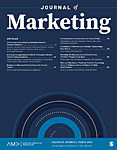
The Different Roles of Product Originality and Usefulness in Generating Word-of-Mouth
SARIT MOLDOVAN, JACOB GOLDENBERG, AMITAVA CHATTOPADHYAYJune 2011, Volume 28, Issue 2, Pages 109–119
Respondents in five experiments were more likely to choose a brand when the brand name started with letters from their names than when it did not, a choice phenomenon we call “name letter branding.” We propose that during a first stage an active need to self-enhance increases the positive valence of name letters themselves and that during stage 2 positive name letter valence transfers to product- specific attributes (e.g., taste of a beverage). Accordingly, when respondents form a brand preference (e.g., of beverages), activating a product-specific need (e.g., need to drink) boosts the influence of this (transferred) valence. Respondents in five experiments were more likely to choose a brand when the brand name started with letters from their names than when it did not, a choice phenomenon we call “name letter branding.” We propose that during a first stage an active need to self-enhance increases the positive valence of name letters themselves and that during stage 2 positive name letter valence transfers to product- specific attributes (e.g., taste of a beverage). Accordingly, when respondents form a brand preference (e.g., of beverages), activating a product-specific need (e.g., need to drink) boosts the influence of this (transferred) valence.

The Persuasive Role of Incidental Similarity on Attitudes and Purchase Intentions in a Sales Context
LAN JIANG, JOANDREA HOEGG, DARREN W. DAHL AND AMITAVA CHATTOPADHYAYFeb 2010, Volume 36, Issue 5, Pages 778-791
This study examines the effects of incidental similarity shared between a salesperson and a potential customer. We show that an incidental similarity, such as a shared birthday or birthplace, can result in a more favorable attitude and a higher intention to purchase. We argue and find that the need for connectedness underlies its persuasive effects in an interpersonal context. In addition, we show that the valence of the salesperson’s behavior and the possibility of an extended service relationship moderate the process. When the need for connectedness is mitigated, the positive effects of incidental similarity can be lost or even reversed.
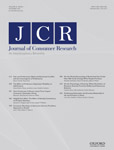
Category Activation Model: A Spreading Activation Network Model of Subcategory Positioning When Categorization Uncertainty Is High
JOSEPH LAJOS, ZSOLT KATONA, AMITAVA CHATTOPADHYAY, MIKLOS SARVARYJun 2009, Vol. 36, No. 1, Pages 122-136
We develop a spreading activation model, which we call the category activation model, to predict where within a category structure consumers are likely to position a subcategory that they have created to accommodate a new hybrid product. Based on this model, we hypothesize that the probability that an individual will position a new category subordinate to a particular category i is proportional to the relative number of categories that are already subordinate to i. We report the results of two studies that support this hypothesis and provide evidence that accessibility is an underlying mechanism.
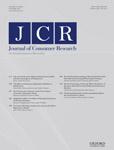
Valuing Time: Moderate Download Times Can Improve Online Goal Pursuit
ANNE LAURE SELLIER, AMITAVA CHATTOPADHYAYApr 2009, Volume 19, Issue 2, Pages 236–245
This research examines how the length of time for which a goal is interrupted affects goal pursuit, in an online context. Goal interruption duration in the form of long download time duration has been identified as a significant impediment to electronic commerce. It is believed that a faster download time is always better to motivate web users to keep surfing. We challenge this belief. In three studies, we find that, under certain circumstances, longer rather than shorter download times motivate web users to keep surfing longer. The counterintuitive pattern of effects can be explained by web users’ fit experiences (Higgins, 2000) while surfing. In particular, our findings suggest that when online surfing “feels right”, web users think that online information is right.

On the Perceived Value of Money: The Reference Dependence of Currency Numerosity Effects
KLAUS WERTENBROCH, DILIP SOMAN, AMITAVA CHATTOPADHYAYJun 2007, Volume 34, Issue 1, Pages 1-10
Money illusion research shows that the nominal (face) value of money affects consumer perceptions of its real value. Recent mixed findings on consumer valuations in different currencies suggest that the underlying anchoring and adjustment processes are complex. We develop a framework to identify boundary conditions that specify the direction of anchoring effects on valuations in different currencies. Consumers anchor on the numerosity of the nominal difference between prices and salient referents (e.g., budgets) when evaluating transactions. Support for our framework comes from a series of experiments that evoke different reference standards. We discuss implications and opportunities for future research.

Just Give Me Another Chance: The Strategies for Brand Recovery from a Bad First Impression
A. V. MUTHUKRISHNAN, AMITAVA CHATTOPADHYAYMay 2007, Issue 44, Pages 334 – 345
We conceptualize the magnitude of change in previously formed evaluations as a function of (1) the evaluative implication of the information (positive or negative) that served as the basis of the original judgment, and (2) the format (comparative or noncomparative) of the challenge. . The results of four experiments suggest that the degree of evaluation revision is different for positive and negative initial evaluations as a function of whether the challenge is in a noncomparative or comparative format. Contrary to what has been observed with initial positive evaluations, which undergo greater revision when the challenge is comparative, an effect we replicate, negative initial evaluations undergo a greater degree of revision when the challenge is noncomparative.
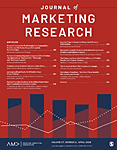
Going with Your ‘Gut Feeling’: The Importance and Functional Significance of Affective Cues in Consumer Judgment and Choice
P. DARKE, A. CHATTOPADHYAY, L. ASHWORTHDecember 2006, 33 (3), 322-328
We suggest that existing research does not fully recognize the potential importance of affective experience in consumer decision-making and judgment. The dominant view suggests that affective cues tend to have an impact on judgment primarily when consumers are either less motivated to be accurate, or when they have diminished ability to judge products (i.e., primarily under low elaboration conditions). Furthermore, affectively based choices are commonly viewed as impulsive decisions which consumers ultimately regret. Using a dual process perspective, the research reported here expands on these views in a number of important ways. First, we show that affective experience can influence choice even when highly motivated consumers are fully capable of making decisions on the basis of tangible product features (i.e., under high elaboration conditions). In particular, affect served as a heuristic cue for decisions made under both high and low elaboration. We also showed that consumers adjusted their use of affective cues in choice for different product categories, depending on whether such cues seemed relevant to satisfaction. Finally, affective purchases made in a natural setting were associated with greater long-term satisfaction, especially when the purchases were important. Overall, affective cues were shown to have much broader effects on consumer decision-making and judgment than has previously been demonstrated, and there was evidence that consumers are unaware of the influence of affective cues on their decisions. As well, the evidence suggests that the use of affective cues can be considered relatively functional, in the sense that it led to increased satisfaction rather than regret.
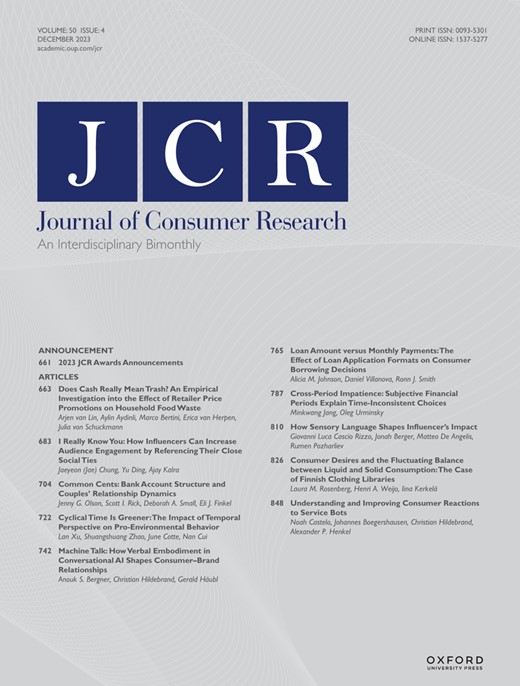
Name Letter Branding: Valence Transfers when Product Specific Needs are Active
C. MIGUEL BRENDL, AMITAVA CHATTOPADHYAY, BRETT W. PELHAM, MAURICIO CARVALLODecember 2005, Volume: 32, Issue: 3, Pages: 405-415
Respondents in five experiments were more likely to choose a brand when the brand name started with letters from their names than when it did not, a choice phenomenon we call “name letter branding.” We propose that during a first stage an active need to self-enhance increases the positive valence of name letters themselves and that during stage 2 positive name letter valence transfers to product- specific attributes (e.g., taste of a beverage). Accordingly, when respondents form a brand preference (e.g., of beverages), activating a product-specific need (e.g., need to drink) boosts the influence of this (transferred) valence.

Managing Brand Experience: The Market Contact Audit
AMITAVA CHATTOPADHYAY, JEAN-LOUIS LABORIEOct 2005, Volume 45 / Issue 01 / Pages 9-16
Although 90 percent of marketing communication investments are accounted for by investments in brand contacts, i.e., the points at which the consumer and the brand come in contact with each other, until now, there has not been a tool that allows managers to identify, a priori and from a consumer perspective, the most effective set of contacts in which to invest. We describe a tool that we have developed that empowers the brand owners/marketers to (1) identify and select the critical contacts that are relevant for a particular brand, (2) integrate across these key contact points, and (3) deliver brand experience through a relevant and pertinent set of consumer brand encounters at a minimum cost, but with maximal impact. We then discuss how the metrics derived from this tool can be used to inform a variety of important decisions in the context of managing brand contacts. We close with a discussion of some of the regularities that we have uncovered from the over 150 brands that we have audited across numerous markets and categories.
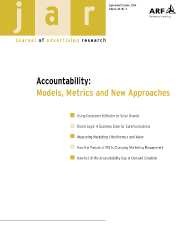
Waiting for the Web: The Effect of Color on Time Perception in Computer Mediated Environments
GERALD J. GORN, AMITAVA CHATTOPADHYAY, JAIDEEP SENGUPTA, SHASHANK TRIPATHIMay 2004, Vol. 41, No. 2, pp. 215-22
The authors investigate the link between the color of a Web page’s background screen while the page is downloading and the perceived quickness of the download. They draw on research that supports links between color and feelings of relaxation and between feelings of relaxation and time perception. The authors predict that the background screen color influences how quickly a page is perceived to download and that feelings of relaxation mediate this influence. In a series of experiments, they manipulate the hue, value, and chroma dimensions of the color to induce more or less relaxed feeling states. The findings suggest that for each dimension, colors that induce more relaxed feeling states lead to greater perceived quickness. The authors provide triangulating evidence with an alternative manipulation: the number of times subjects wait for a download. As does color, this also leads to variation in levels of relaxation and perceived quickness. A final experiment reveals that color not only affects perceived download quickness but also has consequences for users’ evaluations of the Web site and their likelihood of recommending it to others.

Hearing Voices: The Impact of Announcer Speech Characteristics on Consumer Response to Broadcast Advertising
AMITAVA CHATTOPADHYAY, ROBIN J. B. RITCHIE, DARREN W. DAHL, KIMARY N. SHAHINOct 2003, Volume 13, Issue 3, Pages 198-204
Virtually every broadcast advertisement uses the voice of an announcer, but due to lack of guidance from the marketing literature, managers must rely on gut feel when choosing a voice. Drawing on research from psycholinguistics, we identify 3 important voice characteristics— syllable speed, interphrase pausation, and pitch—and link these characteristics to key advertising response variables. By considering these 3 variables simultaneously, we test competing explanations previously offered to explain the process by which speech rate affects consumer response to advertising. Specifically, we assess whether an increase in speech rate enhances or reduces processing of the advertisement and whether this effect is driven primarily by syllable speed or interphrase pausation. Consideration of these 2 aspects of speech rate independently helps identify whether the changes in processing stem from changes in the opportunity to process and/or the motivation to process. Our results show that a voice with faster-than-normal syllable speed and low pitch produces less negative advertisement-directed cognitive responses and more favorable advertisement attitudes, as well as more favorable brand attitudes, lending support to a motivational process explanation. No significant effects were found for interphrase pausation, suggesting that the results cannot be accounted for by the reduced opportunity to process in the compressed conditions.
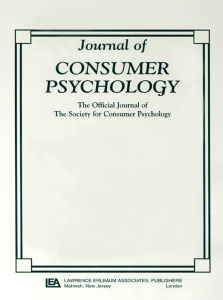
Rethinking Marketing Programs for Emerging Markets
NIRAJ DAWAR, AMITAVA CHATTOPADHYAYOct 2002, Volume 35, Pages 457–474
This article points to a fundamental inconsistency in the emerging market strategies of multinational firms. On the one hand, they seek billions of new consumers in the emerging markets of China, India, Indonesia, and Latin America—on the other, their marketing programs are scarcely adapted for these markets. The result is low market penetration, disappointing market shares and poor profitability. These multinationals are trapped by their own devices in gilded cages, serving the affluent few but ignoring the potential of the billions of new consumers that attracted them in the first place. In this article we propose that, in order to attract billions of new consumers, the marketing programs of multinationals need to be rethought from the ground up. We identify three key factors that characterize emerging markets: (1) low incomes, (2) variability in consumers and infrastructure, and (3) the relative cheapness of labor, which is often substituted for capital. We draw on numerous case studies from around the world to illustrate how to incorporate these realities into marketing programs. We conclude with a discussion of the implications of such an approach for the multinational’s core strategic assumptions.
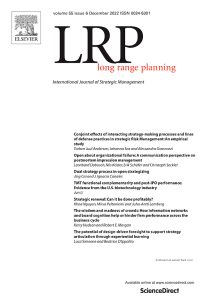
Consumer Control and Empowerment: A Primer
LUC WATHIEU, LYLE BRENNER, ZIV CARMON, AMITAVA CHATTOPADHYAY, AIMEE DROLET, JOHN T. GOURVILLE, A.V. MUTHUKRISHNAN, NATHAN NOVEMSKY, REBECCA RATNER, KLAUS WERTENBROCH AND GEORGE WUAug 2002, Volume 13, No. 3, Pages 297–305
This paper introduces consumer empowerment as a promising research area. Going beyond lay wisdom that more control is always better, we outline several hypotheses concerning (a) the factors that influence the perception of empowerment, and (b) the consequences of greater control and the subjective experience of empowerment on consumer satisfaction and confidence.
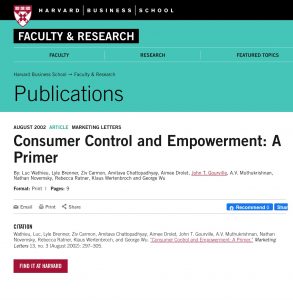
Category Structure, Brand Recall, and Choice
PRAKASH NEDUNGADI, AMITAVACHATTOPADHYAY, A.V MUTHUKRISHNANSep 2001, Volume 18, Issue 3, Pages 191-202
Most marketing discussions of product-markets and competitive positioning implicitly assume that consumers are aware of product category structures. In the present research, we examine this assumption and show how the provision of structure can improve the quality of consumer decisions. The results of the first study suggest that provision of structure increases brand recall and decreases inhibitory effects of part-set cues. In a second study, we show that these positive effects on recall carry over to brand choice, in a memory-based decision. Consumers are able to make choices that are consistent with their preferences when they use an existing category structure to retrieve product information.
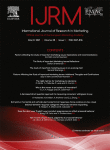
The Importance of Visualization in Concept Design
DARREN W DAHL, AMITAVA CHATTOPADHYAY, GERALD J GORNJan 2001, Volume 22, Issue 1, Pages 5–26
This research seeks to advance our understanding of how visualization can facilitate concept design. It focuses on how designers’ use of a specific cognitive process, visualisation, can influence the development of design concepts. The paper presents a conceptual framework that links the type of visualisation (memory vs imagination) and the content of visualisation (incorporation of the end user) to the nature of the design process and to the nature of the design outcome, i.e. its originality, usefulness, and customer appeal. Two experiments are presented that test the propositions that flow from the proposed model. The results indicate that the designer’s experience in the design process improves in terms of the difficulty experienced in designing the product and information value, as a function of whether the imaginative visualization is used, and whether or not the end user is incorporated in the visualisation. Additionally, visualisation, by the designer, that involves both imagination and images of the end user, results in designs that are perceived to be more useful by the end user. This effect, however, is not realised when memory visualisation and images of the end user are combined. Finally, and most importantly, visualising the end user in combination with imagination-based visualisation led to designs that were significantly more appealing to the customer.
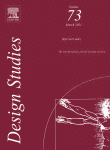
The Use of Imagery in New Product Design
DARREN W. DAHL, AMITAVA CHATTOPADHYAY AND GERALD J. GORNFeb 1999, Volume 36, No. 1, Pages 18-28
In this research, the authors seek to advance the understanding of how marketing can facilitate the new product design process. They focus on how designers’ use of a specific cognitive process, cisual mental imagery, can influence the customer appeal of a design. The authors present a conceptual framework for examining how visual imagery might influence the customer appeal of a design output. This is followed by two experiments that test the hypotheses that flow from the proposed model. The experiments manipulate the type of visual imagery used and the incorporation of the customer in the imagery invoked and then examine its effects on the usefulness, originality, and customer appeal of the resulting design. Consistent with the framework and the proposed hypotheses, the findings show that including the customer in imagination visual imagery during the design process has a greater effect on the usefulness of the design produced than including the customer in memory visual imagery. The results also show that imagery based on imagination results in more original designs than imagery based on memory. Most important, the use of bounded imagination, which results from the incorporation of the visual images of the customer in imagination imagery, leads to the creation of designs that are more appealing to the customer. The findings are integrated into a discussion that clarifies the role of visual imagery in design and underscores the potential of this cognitive tool in the new product design.
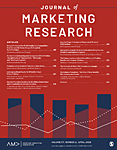
When Does Comparative Advertising Influence Brand Attitude? Role of Delay and Market Position
AMITAVA CHATTOPADHYAYAug 1998, Volume 5, Issue 5, Pages 461-476
This article presents the results of an experiment that examines the role of delay and sponsor’s market position in influencing the effectiveness of comparative ads compared to noncomparative ads.
The results show that comparative ads sponsored by an unknown brand are more effective in changing consumers’ brand attitudes than noncomparative ads, when brand response occurs at a delay. Implications of these results for the Elaboration Likelihood Model are discussed.
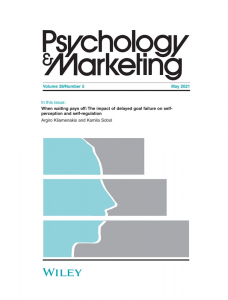
To Zap or Not to Zap: A Study of the Determinants of Channel Switching During Commercials
S. SIDDARTH, AMITAVA CHATTOPADHYAYJul 1998, Volume 17, Issue 2, Pages 124-138
We present a conceptual framework to describe the commercial zapping phenomenon and use it to identify factors that influence channel switching during commercials. Drawing on previous research, published reports of practitioner gut feel, interventions used by advertisers to reduce channel switching, and proprietary studies reported in the published literature, we describe how these variables might potentially affect the decision to zap a commercial. We use a latent class approach to model the impact of the identified factors on two aspects of the switching decision—whether or not a commercial is zapped (modeled with a binary logit model) and, conditional on a zap having taken place, the number of seconds that the commercial was watched before being zapped (modeled within the proportional hazards framework). The model is estimated on telemeter data on commercial viewing in two categories (spaghetti sauce and window cleaners) obtained from a single-source, household scanner panel.
The results from the empirical analysis show that households can be grouped into two segments. The first, which consists of about 35% of households in the sample, is more zap-prone than the second. For this “zapping segment,” the probability of zapping a commercial is lower for households who make more purchases in the product category. Also, zapping shows a J-shaped response to previous exposures to the commercial, with the associated zapping elasticity reaching its minimum value at around 14 exposures and increasing rapidly thereafter. This finding suggests that advertisers should be cautious not to use media schedules that have excessive media weight or that emphasize frequency over reach.
We found that zapping probabilities for ads aired around the hour and half-hour marks to be significantly higher than for other pod locations. Based on these results, we argue that prices for advertising pods located around the hour/half-hour marks should be between 5% to 33% lower than those in the remaining portion of the program.
We explore the impact of advertising content on zapping and find that the presence of a brand differentiating message in a commercial causes a statistically significant decrease in zapping probabilities. While the magnitude of this effect is small, the finding suggests that it may be helpful to include qualitative variables in future models of advertising response.
We propose the expected proportion of time that an ad is watched as a benchmark to compare 15-second and 30-second ad formats from a zapping standpoint. We found no significant differences between the two formats on this dimension. Our analysis also shows that, due to the impact of previous exposures on zapping, the use of 15-second ads runs a greater risk of reaching the threshold exposure level beyond which zapping probabilities start to increase. This implies that while managers must be cognizant of the risks of overexposure for any ad, it is especially important in the case of the shorter, 15-second ad format.
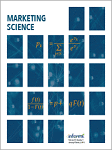
The Effects of Color as an Advertising Execution Cue: They’re in the Shade
GERALD J. GORN, AMITAVA CHATTOPADHYAY, TRACEY YI, DARREN W. DAHLOct 1997, Volume 43, Issue 10, Pages 1387-1400
In designing print ads, one of the decisions the advertiser must make is which color(s) to use as executional cues in the ad. Typically, color decisions are based on intuition and anecdotal evidence. To provide guidelines for these decisions, this research proposes and tests a conceptual framework linking the hue, chroma, and value of the color(s) in an ad to consumers’ feelings and attitudes. In an experimental study, the three dimensions of color used in an ad are manipulated using a between-subjects design. The results support the hypotheses that ads containing colors with a higher level of value lead to greater linking for the ad, and this effect is mediated by the greater feelings of relaxation elicited by the higher value color. Feelings play an equally important role in the effect of chroma. Consistent with the hypotheses, higher levels of chroma elicit greater feelings of excitement, which in turn increase ad likeability. A follow-up study found that although managers often select higher value and higher chroma colors, in a large number of cases they do not. The findings of both studies are integrated in our discussion of the importance of value and chroma in increasing the range of options available to a manager faced with the selection of colors in an ad.
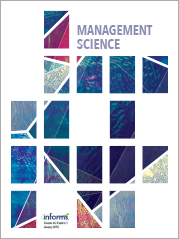
To Match or Not to Match: Should Advertising Appeals Match the Bases of Consumers’ Attitudes
LAURETTE DUBE, AMITAVA CHATTOPADHYAY, ANICK LETARTENov 1996, Volume 36, Issue 6, Pages 82 – 89
Advertising planning models, such as the FCB Grid, suggest that for products/brands for which attitudes are based primarily on affect, advertisers would be best served by using affective appeals. Conversely, when attitudes are based primarily on utilitarian, cognitive foundations, advertisers should use informative appeals. In the reported field study, we attempt to assess whether advertisers follow this recommendation. We do so by first assessing the bases of attitude for food products, for a sample of French-Canadians. We then content analyze TV advertisements for food, targeted to the same population, and examine the degree to which there is a fit between the attitude bases reported by the consumers and the appeal used to persuade them to buy. Results provide little support to the expected match between advertising content and attitude bases. Our analyses revealed that, for food products, attitudes were primarily based on affect whereas advertisements typically utilized informational appeals. Theoretical and practical implications of the findings are discussed.
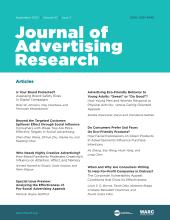
Marketing Pharmaceuticals to Developing Nations: Research Issues and a Framework for Public Policy
KUNAL BASU, AMITAVA CHATTOPADHYAYDec 1995, Volume 12, Issue 4, pages 300–313
A system of exchange for marketing pharmaceuticals to developing countries is described, identifying the key conflicts among its constituents. A research agenda for marketing is suggested, involving both systemic characteristics and exchange behaviours. A framework for public policy appropriate for governments in the developing world is proposed.

Effectos del Color
GERALD J GORN, AMITAVA CHATTOPADHYAY, TRACEY YI1994, 10 (1), 1-14
In designing print ads, one of the decisions the advertiser must make is which color(s) to use as executional cues in the ad. Typically, color decisions are based on intuition and anecdotal evidence. To provide guidelines for these decisions, this research proposes and tests a conceptual framework linking the hue, chroma, and value of the color(s) in an ad to consumers’ feelings and attitudes. The results support the hypotheses that ads containing colors with a higher level of value lead to greater linking for the ad, and this effect is mediated by the greater feelings of relaxation elicited by the higher value color. Feelings play an equally important role in the effect of chroma. Consistent with the hypotheses, higher levels of chroma elicit greater feelings of excitement, which in turn increase ad likeability.

Music, Music Videos and Wearout
MARVIN E. GOLDBERG, AMITAVA CHATTOPADHYAY, GERALD J. GORN, JERRY ROSENBLATTJan 1993, Volume 10, Issue 1, Pages 1–13
Repeated exposure to a music video was found to forestall wear out relative to repetitive exposure to the music only. Susceptibility to wear out in the case of the music video was further reduced by eliminating the closure associated with the story told by the video. The level of positive cognitive responses was posited as a mediator to help explain the observed results. © 1993 John Wiley & Sons, Inc.

Transitions in Preference over Time: The Effects of Memory on Message Persuasiveness
JOSEPH W. ALBA, HOWARD MARMORSTEIN, AMITAVA CHATTOPADHYAYNov 1992, Volume 29, Issue 4, Pages 406-416
In a mixed-choice situation, consumers must choose between brands that are directly observable and brands encountered previously. Prior research suggests a conservative bias to choose an observable brand if it is acceptable and if memory for the previous encountered brands is poor. The authors demonstrate in three experiments that this bias may be highly sensitive to stimulus factors. They replicate the bias when all brands have similar attribute structures. However, when the brands are less comparable, aspects of the previously encountered brands or their descriptions may interact with memory to eliminate or reverse the effect. Thus, over time, preference for a memory brand in relation to an observable brand may increase or decrease significantly, and may do so irrespective of the memory brand’s true relative merits. Implications of these results for current models of persuasion are discussed.
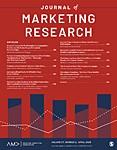
Does Attitude toward the Ad Endure? The Moderating Effects of Attention and Delay
AMITAVA CHATTOPADHYAY, PRAKASH NEDUNGADIJun 1992, Vol. 19, No. 1, Pages 26-33
Do the effects of attitude toward the ad on consumer decisions endure beyond the scenarios that characterize previous research? In examining this question, we focus on the persistence of ad-attitude effects as a function of the level of attention at encoding and the delay between ad exposure and response. The results of an experiment designed to test our hypotheses suggest that ad-attitude effects do not persist in a number of instances. Over time, as memory for an ad fades, its effects on ad attitude dissipate. As a result, the ad-attitude effects on brand attitude that are reported in past research disappear after a delay. In fact, in certain situations likable ads are shown to have a detrimental impact on brand attitude. For instance, when it receives little attention, a highly affective ad (compared with a more neutral ad) may focus attention away from the brand claims and lead to a lower brand attitude after a delay.
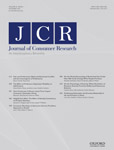
Music and Information in Commercials: The Effects on an Elderly Sample
GERALD GORN, MARVIN GOLDBERG, AMITAVA CHATTOPADHYAY, DAVID LITVACKOct 1991, Volume 31, Issue 5, Pages 23-32
This article examines the impact of music in commercials on the ability of the elderly to process the information contained in the advertisement. The results of the experiments reported shows that music compromises the elderly’s ability to process the information contained in the advertisement.

The Impact of Moods Generated by TV Programs on Responses to Advertising
MAHIMA MATHUR, AMITAVA CHATTOPADHYAYApr 1991, Volume 8, Issue 1, Pages 59-77
The research shows that moods generated by TV programs spill-over to the ads during embedded ad breaks, with programs that generate happy moods influencing the likability of the embedded ads favorably and with programs that generate negative moods influencing the likability of the embedded ads unfavorably.

Humor in Advertising: The Moderating Role of Prior Brand Evaluation
AMITAVA CHATTOPADHYAY, KUNAL BASUNov 1990, Volume 27, Issue 4, Pages 466-476
A consumer’s prior evaluation of an advertised brand is hypothesized to moderate the effectiveness of humor in advertising. Further, cognitive responses are hypothesized as mediators of the impact of humorous ads on brand attitude. The results support the hypothesized moderator role of prior brand evaluation: when prior evaluation of the advertised brand is positive a humorous ad is more effective than its non-humorous counterpart in changing consumer attitudes and choice behavior. When consumers have a negative prior attitude, the opposite is true: a humorous ad is less effective in changing consumer attitudes and choice behavior than its non-humorous counterpart. The results also support the conceptualization of cognitive responses as mediators of the impact of humorous advertisements on brand attitude.

Situational Importance of Recall and Inference in Consumer Decision Making
AMITAVA CHATTOPADHYAY, JOSEPH W. ALBAJun 1988, Volume 15, Issue 1, Pages 1-12
An experiment, which examines the relationship between cognition and attitude toward a product as a function of time and the presence of information anout a competing product, is described. A scheme, which partitions cognitive responses into categories on the basis of their relative abstractness and, therefore, memorability, is proposed. Results show that the proposed scheme accounts for a significant amount of attitude variance and outperforms the traditional cognitive response scheme, especially after a delay. Results also show that, contrary to recent theory and research regarding the lack of correlation between attitude and recall, recall can be a predictor of attitude given the proper context and a theoretically justifiable recall measure.

Salience Effects in Brand Recall
JOSEPH W. ALBA, AMITAVA CHATTOPADHYAYNov 1986, Volume 23, Issue 4, Pages 363 369
The effects of brand salience on brand recall were investigated in five experiments, each involving a different product category. The authors demonstrate that increasing the salience of a single brand can significantly impair unaided recall of competing brands. The effect was observable even in the early stages of the recall process.

Reducing the Size of the Retrieval Set: The Effects of Context and Part Category Cues on the Recall of Competing Brands
JOSEPH W. ALBA, AMITAVA CHATTOPADHYAYAug 1985, Vol. 22, No. 3, Pages 340-349
In three experiments, the effects of presenting a subset of competing brands on the recall of the remaining brands from the category was studied. The first two experiments showed that presenting a subset of brands from the category may enhance or reduce the probability of recall of the remaining brands from the category, depending on the knowledge level of the consumer. The third experiment showed that presenting even two brands from a category to inhibit the recall of entire categories of competing brands. An explanation and discussion of the results are presented.

Marketing Strategy and Differential Advantage: A Comment
AMITAVA CHATTOPADHYAY, PRAKASH NEDUNGADI, DIPANKAR CHAKRAVARTISpring 1985, Volume 49, Issue 2, Pages 129 - 136
This article critiques the “new paradigm of marketing strategies” proposed by Cook (JM, Spring 1983). It is shown that his formulation of the strategic marketing ambition and differential advantage concepts does not provide general or actionable links between a firm’s market performance goals and its marketing mix decisions. The consequent limitations of Cook’s framework are discussed, and alternative formulations that may overcome these limitations are suggested.


